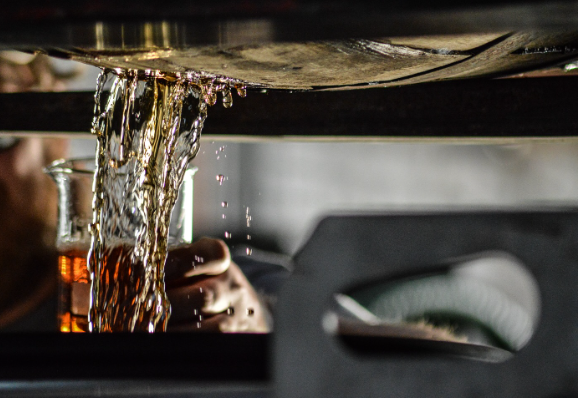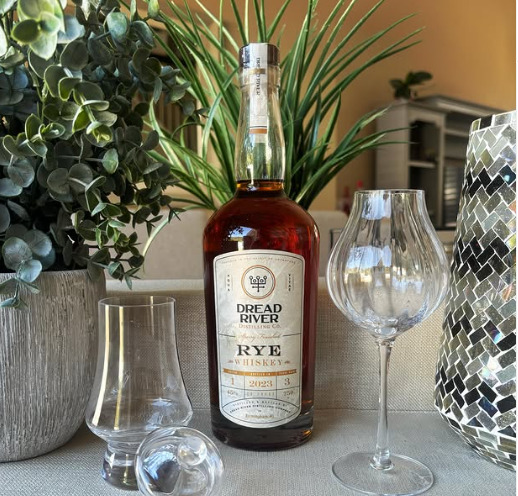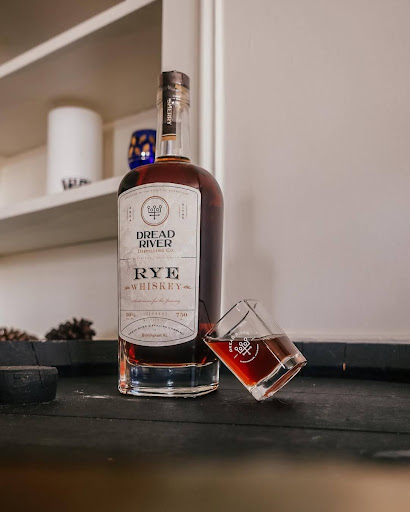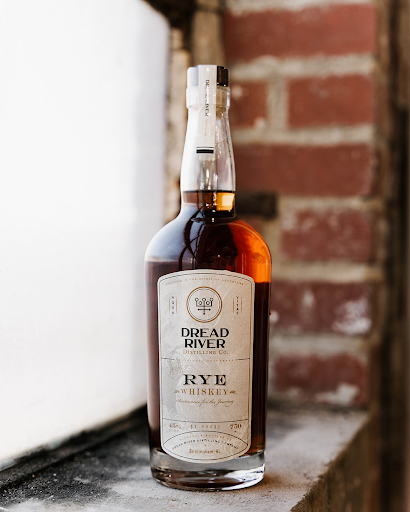The History of Rye Whiskey in America: From Prohibition to Revival
March 25, 2025
Dread River

Back in the colonial days, rye whiskey was pretty much a go-to drink, laying the groundwork for the country’s distilling culture before bourbon really took off and became the star of the show. If you consider its history, it’s amazing. Rye began strongly in the Northeast, then, suddenly—it all but disappeared during Prohibition. But now, cut to the present and it’s having a huge comeback. The story of rye whiskey is one of resilience, craftsmanship, and how people’s palates have changed over the years.
Today, craft distillers are jumping back into this strong spirit, giving it their own twist. Rye whiskey is taking its rightful place again, right in the middle of the whiskey renaissance. In this blog, we are delving into the rich history of Rye Whiskey in America. So let’s get started, shall we?
The Early Days: Rye Whiskey’s Rise in America
Rye whiskey has a very fascinating history, going as far back as the 17th and 18th centuries when European settlers, specifically Scottish, Irish, and German, introduced their techniques of distillation to the American colonies. Rather than persisting with the barley beverages they were accustomed to in their homeland, they discovered that rye grain actually thrived in the rugged Pennsylvania and Maryland soil. Rye therefore naturally became the grain of choice for whiskey manufacture.

Skip to the late 18th century, rye whiskey became the preferred beverage all over the country. People absolutely adored the strong, spicy flavor it gave. This affection for rye helped create a thriving sector, with Pennsylvania and Maryland becoming important production centers. The Whiskey Rebellion of 1791, a direct reaction to national taxes on distilled spirits, also helped to further cement rye whiskey’s place in American society and history.
Prohibition: The Fall of an American Classic
The Volstead Act of 1920 caused Prohibition to loom large over the distilling customs of the United States. Some unscrupulous rye whiskey manufacturers turned to illicit production to meet underground needs overnight, while others had to close their doors. While bourbon and Canadian rye whiskey replaced the black market, the growth of bootlegging and speakeasies kept whiskey culture alive, but rye whiskey suffered disproportionately.
A legal loophole allowed some distillers to make medicinal whiskey that could be purchased only by prescription, still a long way off from the booming rye whiskey industry of the past. Rye whiskey had lost much ground on its sweeter, corn-based relative: bourbon by the time Prohibition was overturned in 1933. Though Prohibition’s repeal should have announced a new age for rye whiskey, the American palate had evolved. The consumer’s shift to bourbon, evident from its softer, sweeter profile, put rye whiskey’s production at great risk.
Post-Prohibition Decline & Revival: The Bourbon Boom and Rye’s Struggle
Major rye whisky distilleries had either ceased operations or changed to bourbon production by the middle of the 20th century. Surviving just through a few distilleries making small batches largely for use in traditional cocktails like the Old Fashioned and the Manhattan, rye whisky had almost vanished by the late 1980s.
Check out this article to learn more about the redemption & revival of rye whiskey.
The Rye Whiskey Revival: A Bold Comeback
In the lead role with rye whiskey, the 21st century ushered in a new era of restored regard for legacy spirits. During the craft distillers’ explosion in the American market, small producers were re-familiarizing themselves with the rye’s bold, spicy sophistication. Spurred on by bartenders seeking authenticity for classic cocktails, rye whiskey became super-star popular once more, finding renewed placement on the bar list as well as store shelves.

Among the top distilleries, including Dread River Distilling Co, rye whisky’s historical value is being celebrated while being modernized for present customers. Craft distillers aided rye whiskey in regaining its past luster by shining a spotlight on excellent grain selection, small-batch manufacturing, and old-fashioned aging techniques.
Book a tour or reserve a seat to experience the truly elevated experience of tasting whiskey in Birmingham.
Rye Whiskey Today: A Staple in the Modern Whiskey Scene
Today’s whiskey scene is seeing rye regaining popularity as its bold, complex tastes appeal to seasoned whiskey enthusiasts as well as beginners in the category. Highly sought-after, small-batch, and single-barrel rye whiskeys appeal to a growing demographic seeking originality and quality.
Choosing the Right Rye Whiskey: What to Look For
Selecting a rye whiskey is not only about finding a bottle off the shelf; quality, mash bills, aging techniques, and the distinct profiles each distillery brings are all factors to think about.

Mash Bill and Grain Composition
Now, legally, rye whiskey has to be made up of at least 51% rye grain. The remainder of the mash bill? Well, that might involve something like corn, malted barley, or even wheat. If you’re working with a high-rye mash bill—95-100% rye—it’s gonna be spicy and full-flavored, with lots of strong pepper, clove, and herbal flavor. But if you back down on the rye a bit and add in some corn, you get less spice and some pleasant caramel sweetness. This makes it simpler for new entrants to enter the rye whiskey market.
Aging and Maturation Process
Aging contributes largely to the depth and richness of rye whiskey. Young ryes (2-4 years) have more robust, grain-forward tastes with some raw spice, whereas longer-aged ones (8-12 years) gain more mature vanilla, oak, leather, and dried fruit flavors from longer exposure to the barrel. Barreled in new charred American oak, the whiskey takes up tannins and vanillin compounds that contribute complexity and smoothness to the end product.
Flavor Complexity and Distillation Style
Every rye whiskey has its distinct taste profile depending on distillation techniques. Column still distillation using traditional methods produces sophisticated, balanced rye, while pot still distillation yields a heavier-bodied spirit. Craft distilleries’ small-batch and single-barrel offerings, like Dread River, have greater complexity with a more unique taste experience for enthusiasts.
How to Enjoy Rye Whiskey: Classic and Modern Approaches
Highly flexible, rye whiskey has a biting, substantial profile meant to be savored straight, over ice, or combined in a range of classic and contemporary cocktails. Understanding the correct way to savor rye whiskey raises the experience of drinking and lets fans whole appreciate its complexity.
Purists say that to best appreciate fine rye whiskey is to consume it neat—room temperature and served in a Glencairn glass, to concentrate the aromas. Sipping rye neat makes it possible for the drinker to thoroughly explore the interaction between spice, caramelized sugars, and oak influences. Adding water in a couple of drops is said to reveal the whiskey by reducing the hotness and liberating more extensive vanilla, citrus, and dried-fruit flavorings. For those who want a slightly cooled experience, pouring rye whiskey over a big ice cube quietly mellows the spice without sacrificing its structure.
Timeless Rye Whiskey Cocktails
- Manhattan: Made with rye whiskey, sweet vermouth, and Angostura bitters, this timeless cocktail perfectly balances sweetness and spice to produce a very elegant sipping experience.
- Sazerac: Typical of New Orleans, the Sazerac marries rye whiskey with sugar cube, Peychaud’s bitters, and absinthe to produce an elegant, aromatic alcoholic beverage.
- Boulevardier: A little stronger, whiskey-laced Negroni; rye whiskey is mixed with Campari and sweet vermouth to create a bitter-sweet, herbal fête.
Take a Sip of Extraordinary Craftsmanship
The story of rye whiskey is quite the ride. From being the go-to drink back in the colonial days to nearly fading away, and now, it’s making a big comeback. It really shows how some things, like craftsmanship and tradition, just refuse to fade away. With contemporary distilleries bringing back forgotten methods and incorporating new aging techniques, rye whiskey continues to change while honoring its past. For those who want to experience the rich history and unique taste of rye whiskey, craft distillers in Birmingham such as Dread River provide highly skilled renditions that respect tradition while establishing new benchmarks for quality.
We’re whipping up some amazing versions of rye that not only respect the old ways but also push the envelope for what’s possible. You can mix it in a cocktail or take your time sipping it neat to really enjoy all those layers of flavor. Rye whiskey is still a bold, classic choice in the world of American spirits, and it’s here to stay.